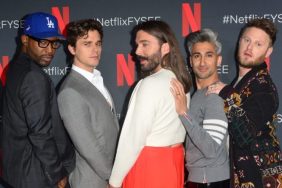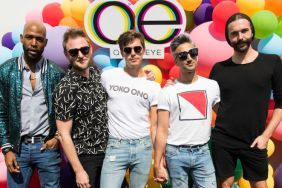
It began with a selfie.
Two years ago I wrote an article for art blogazine Hyperallergic called “Is There a Queer Selfie?” In this piece, I question the idea of calling a selfie queer, arguing that the selfie itself(ie) is a queer taking back of the gaze — rather than allow someone else to photograph you, the selfie is already queer by the act of being an image that one takes of oneself.
Unbeknownst to me, a graduate student in Montreal used that article in a presentation he gave about the queer selfie. I learned about this through a Facebook message sent to me by a former lover from college who I hadn’t spoken to in almost 10 years. Last I recalled, she was living in New York, but apparently now she was in Montreal as well. It was a selfie coincidence.

Collage of Montreal photos taken by Alicia Eler.
We started talking again, as one does with people from the past, and she introduced me to the graduate student, who invited me to apply for a conference in Montreal. I was accepted to participate in a workshop at the conference, and I took it as an opportunity to just go . . . mostly to explore this selfie coincidence.
Montreal is freezing most of the year, and even though I grew up in Chicago I was not prepared for this abrupt temperature shift coming in from Los Angeles.
In Montreal, I inevitably ended up talking about Tinder, an app where selfies live. Though the app’s logo is a single fiery, smoldering flame, there’s something frigid in this digital landscape. Swiping around it, I recalled my mixed feelings about Tinder, which takes its inspiration from gay location-based apps like Grindr.
I was skeptical about Tinder after hearing former-CEO Sean Rad’s pitch about it at “Our Selfies, Ourselves,” a panel discussion at LACMA held in April 2014. Rad likened the “swipe yes/no” motion of Tinder to a real-life experience of walking down the street, seeing someone, and immediately judging if they’re fuckable. Rad implied that this is how attraction begins — the hookup, date, partner, marriage, but not necessarily in that order.

Ann Hirsch, Playground, JOAN, Los Angeles, 2015. Featuring AnneMarie Wolf and Gene Gallerano. Runtime 65 minutes. Photo: Ruben Diaz.
I half-believed him, wondering if subconsciously I also did that to every person I encountered in public. His idea felt half-predatory and half-realistic, but I didn’t try out Tinder until about a year after that LACMA panel.
I found myself swiping right to women who looked like they were hipster goth-y or sexy creative types – writers, actors, comedians, performers, people I’d like to know offline. After two relatively normal dates, I happened to chat with a writer who eventually drifted off into the mobile ether after mentioning a character she’d been working on. They were planning to take a trip to Paris, she told me. I wished them both well. A few weeks later at a Passover dinner in Hollywood, she walked in and we locked eyes, saying hello because we were not meeting for the first time.
A few weeks before that Passover dinner, I found myself at JOAN, a space in Culver City, for the L.A. premiere of performance artist Ann Hirsch’s two-person, two-act play, “Playground”. It first opened in October 2013 at the New Museum in New York City. In these emotionally traumatic 65-minutes, Hirsch culls from her own tween experiences in AOL chat rooms of the late 90s to create a very believable relationship between 12-year-old Anni and 27-year-old man who went by the screename Jobe. What began as a simple AOL chat room friendship initiated by Jobe evolved into an online sexual relationship that explores the young girl’s violation by this older guy who could only be called a predator.

Ann Hirsch, Playground, JOAN, Los Angeles, 2015. Featuring AnneMarie Wolf and Gene Gallerano. Runtime 65 minutes. Photo: Ruben Diaz.
The play oscillates between projecting their IMs back and forth onto the wall behind them as they’re happening, performing sexualized phone calls between the two of them, and witnessing fantasy in-person embraces. The audience is like a voyeur of the entire relationship, which is ironic because their relationship itself is built on voyeurism, fantasy and role-play. Anni and Jobe never meet in-person, but their emotional connection touches the audience, clearly communicating how real and painful it is for both of them to express this sort of vulnerability. Of course, Jobe’s age is an issue — he is a predator.
Despite the intensity and honesty of this play, it received mixed reviews. Mostly, critics wondered why this play was relevant today? Alexis Clements explores what the play missed out on in her critique: “I couldn’t help thinking about the other side of the story: all the ways that chat rooms opened up new and really important ways for young people to explore sexuality, friendship, and relationships, as well as their feelings and ideas.”
Clements’ insightful take on Hirsch’s well-wrought production reminded me of a girl I know quite well. It was 1997, around the same time Hirsch’s play took place. She was 15-years-old and cruising an early queer dating website called PlanetOut.com, looking at other peoples’ selfies. The voyeur was teenage me.

Crystal Paradise is a weekly column published every Tuesday by Los Angeles-based writer Alicia Eler that navigates the naturally occurring weirdnesses that spark at the intersection of art, technology and travel.








